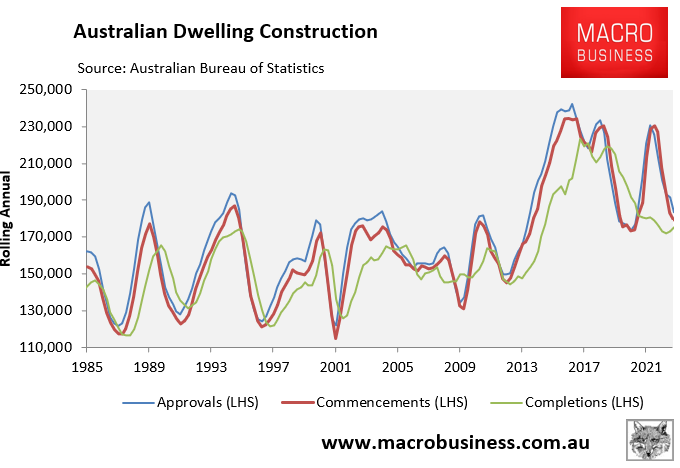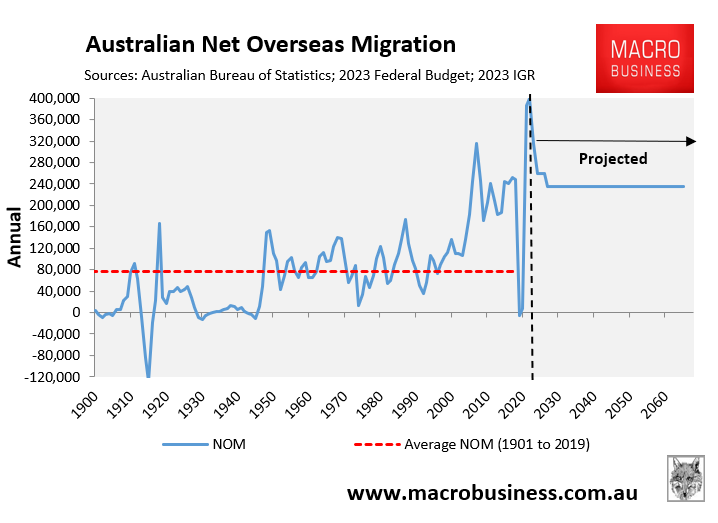National Cabinet has placed a great deal of faith in private developers to build 1.2 million homes over five years, beginning 1 July 2024.
The reality of the situation is that Australia’s developers have minimal incentive to ramp-up construction to meet National Cabinet’s target, since they make money from drip-feeding supply onto the market.
It is also telling that the Albanese Government’s own contribution to the supply target through the Housing Australia Future Fund, assuming it ever passes the Senate, will be just 30,000 homes – just 2.5% of the total!
Nicole Gurran, a professor in the Sydney School of Architecture, Design & Planning at the University of Sydney, also made the observation on Tuesday that Australia has actually approved a lot of homes, but a significant share of these are never developed
In turn, this suggests that rigidity in “planning” is not the problem:
“Nationwide, more than a million dwellings were approved between 2017 and 2022, despite the pause in immigration and the COVID interruption”.
“In fact, since 2014, we’ve seen record levels of housing approvals, often approaching the 240,000 homes a year we’d need to deliver to meet national cabinet’s “new” target”.
“What about higher-density housing? In a big shift, about half the homes built between 2016 and 2021 were townhouses or apartments”.
“Contrary to popular perception, the evidence suggests that planning permission isn’t the problem. In NSW, for example, more than 90% of multi-unit development applications are approved and decisions are issued within about three months”.
“To diagnose Australia’s real housing supply problem, we need to look at the data on how many approved homes actually begin – and finish – construction”.
“Between June 2020 and 2021, 221,000 dwellings were approved, but only 136,000 commenced. A year later, only 133,000 had been completed. Similar gaps between dwelling approvals and completions have occurred over the past decade”.
“Our real supply problem is that Australia is now almost entirely dependent on the private market to deliver new homes. The proportion of homes built by the public sector has fallen from well over 10% in the mid-1980s to about 2% today”.
“This means major residential projects proceed when prices are buoyant or rising, and finance cheap and flowing, but drops off when conditions shift”.
Below is a chart backing-up Gurran’s claim:

Dwelling approvals average 208,300 per year over the past decade, whereas completions averaged 190,700.
Ultimately, you cannot solve a supply problem by continually pumping demand via extreme levels of immigration (population growth).
Therefore, the first best solution to Australia’s housing shortage is to reduce immigration to a sustainable level closer to the historical average (i.e. about 100,000 per year):

That would end the housing shortage and eliminate the need to transform Australian suburbs into crowded apartment blocks.
Australians are overwhelming opposed to high levels of immigration.
Nobody voted for Albo’s Giant Australia of 40.5 million people by 2062-63. And nobody wants their suburbs to be converted into high-rise slums.

